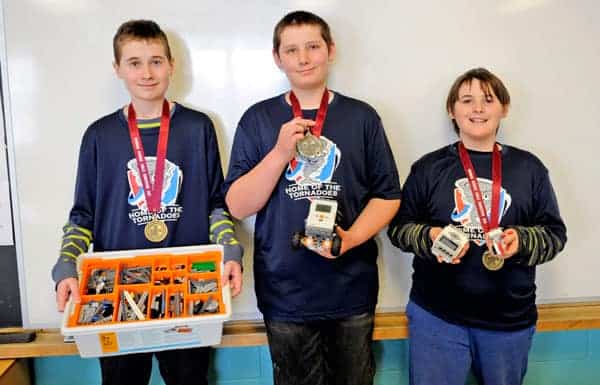The neighbours aren’t going to make it easy for the company behind a proposed biogas facility in Elmira. The residents are concerned about odours, and nearby industries such as Chemtura and the pet food mill have histories that only add to neighbourly skepticism.
Some 200 residents showed up at Lions Hall Tuesday evening to learn more about the proposal by Woolwich Bio-En Inc. to build a cogeneration unit that would produce 2.8 megawatts of renewable electricity – enough to power 2,200 homes – and 3.4 mW of heat. The $12-million facility would be fueled by biogas created by converted organic waste.

Many of those in attendance came armed with questions about how the facility would operate, the risks of creating methane gas and the impact of truck traffic. The most common topic, however, was odour, with many people drawing comparisons to the problems at other plants.
Susan Bryant, a member of APT Environment and the Chemtura Public Advisory Committee, said history has shown residents need to be wary about assurances from industry and the Ministry of the Environment – odour complaints can take months or years to resolve.
“I’m not unwilling to be convinced, but somebody saying it will be fine is not enough,” said High Street resident Ed Speers, an organizer behind the Bio Fuel Citizen’s Committee (BFCC), launched by neighbours of the proposed plant on Martin’s Lane.
“I have lots of questions – I haven’t got them all answered yet,” he said in an interview at the open house, indicating the list was at 46 … and growing.
Easing the fears of neighbours and educating the community about the benefits of a biogas facility was the purpose of the meeting, said Bio-En Power Inc. president Chuck Martin.
“Education is the key. People need to know this is a solution to a problem, not a problem itself.”
After the open house, he said some of the people went away with a better idea of what’s proposed, but others remain opposed no matter how many assurances they’ve received.
“There are certainly some people who are opposed to it, and we aren’t going to change their minds.”
While the technology is used widely in Europe, it’s relatively new in North America. With that in mind, Bio-En had representatives from its Austrian partners on hand to answer questions about public experiences with operations there.
Armin Schöllauf, head of engineering for Agrinz Technologies, said there are some 7,000 biogas facilities operating in Europe. His company has been directly involved in 40 such plants in Austria, and that many again in surrounding countries. In each case, the plants have proven safe and trouble-free, even when located much closer to residential neighbourhoods than is proposed for Elmira.
“There are 7,000 plants in Europe because they bring benefits, not because they’re ticking time bombs.”
New facilities are built now with little fuss because Austrians have become used to such plants and know what to expect.
While interested to hear about the Austrian experience, Speers said he would be happier if there were established operations nearby to compare with the Elmira proposal.
“It would be a hundred times easier if you could say, ‘Here’s an example of what we’re talking about – go and visit it,’ he said. “We’re an experiment. If it doesn’t work, I’ve got to move.”
Speers and other neighbours have indicated support for the biogas concept, but suggest the facility would be better located in a more remote area, away from the town.
That’s not an option, however, Martin noted. Having spent a year and a half looking for a location, all of the requirements quickly eliminated many spots. In order to work, the facility needs to be located where it can tap into the electrical grid, close to customers for its steam heat and near to sources of materials. Most notably, the business can’t be run in an agricultural setting, but has to be established in an industrial area such as the one in the north end of Elmira.
“We had a long list of potential sites, but after going through all the factors, we were left with only a handful of quality sites; this was one of them.”
The Austrian technology uses an anaerobic digester to convert organic material into biogas and fertilizer. It will be fed by waste material, including livestock manure, food waste, used cooking oils and other fats and the like. A diesel generator converted to work with methane will generate electricity to be sold back into the grid, while steam heat produced could be sold to neighbours such as the pet food mill.
Following this week’s open house, the MOE will wade through all of the public comments as part of its review of Bio-En’s application for a certificate of approval to operate the biogas plant. There is currently no timeline for its next report.








